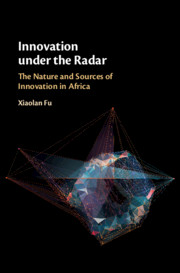Book contents
- Innovation under the Radar
- Innovation under the Radar
- Copyright page
- Dedication
- Contents
- Figures
- Tables
- Foreword
- Acknowledgements
- 1 Introduction
- 2 Innovation in Low-Income Countries
- 3 The Economy of Ghana and Tanzania
- Part I The Nature and Domestic Sources of Innovation in Africa
- Part II The Diffusion of Foreign Innovation into Africa
- 9 The Diffusion of Foreign Innovation to Africa
- 10 Social Networks and Knowledge Diffusion within MNE Subsidiaries
- Part III Emerging Technologies and Innovation in Africa
- Book part
- References
- Index
10 - Social Networks and Knowledge Diffusion within MNE Subsidiaries
from Part II - The Diffusion of Foreign Innovation into Africa
Published online by Cambridge University Press: 27 November 2020
- Innovation under the Radar
- Innovation under the Radar
- Copyright page
- Dedication
- Contents
- Figures
- Tables
- Foreword
- Acknowledgements
- 1 Introduction
- 2 Innovation in Low-Income Countries
- 3 The Economy of Ghana and Tanzania
- Part I The Nature and Domestic Sources of Innovation in Africa
- Part II The Diffusion of Foreign Innovation into Africa
- 9 The Diffusion of Foreign Innovation to Africa
- 10 Social Networks and Knowledge Diffusion within MNE Subsidiaries
- Part III Emerging Technologies and Innovation in Africa
- Book part
- References
- Index
Summary
Both the knowledge and technology diffusion literature largely focus on adoption and adaptation at country and firm levels. The literature on how knowledge and technology are transferred, adopted and adapted at the level of the individual remains under-researched. Based on a unique employees and managers MNE in Ghana in 2015 and using social network analysis, this chapter examines the transfer of knowledge at the individual level and presents new evidence on the role of managerial knowledge diffusion from MNEs to host countries. Our results indicate that knowledge flows occurs from MNEs to local people. We, however, found that foreign knowledge transfer, particularly from Chinese MNEs and EU MNEs, is similar. The results also suggest that firm network structures influence knowledge transfer within firms, with the more decentralized MNEs and local workers in Chinese MNEs tending to perform better. In terms of policy recommendation, the chapter suggests that trade policies must focus on the stimulation of FDI inflows through MNEs that have decentralized subsidiary structure as they tend to serve as a better conduit for knowledge transfer to local employees
- Type
- Chapter
- Information
- Innovation under the RadarThe Nature and Sources of Innovation in Africa, pp. 240 - 260Publisher: Cambridge University PressPrint publication year: 2020

